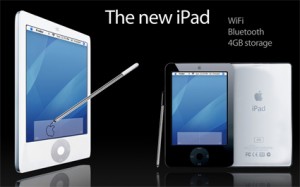The opening of The King’s Speech, starts with the King stammering his way through a speech in front of 120,000 people. While you may not face that level of pressure, having the ability to deliver effective presentations is an important skill to fast track your career, especially into senior ranks. Often a better presenter will be promoted ahead of a manager with superior technical skills. As an executive speech coach, I am invited to work with senior executives to help them iron out difficulties they have communicating with their key stakeholders, like board of directors or clients. Here we examine two common obstacles facing managers and executives in China and suggest a few solutions. Don’t worry, none of them involve smoking cigarettes or putting marbles in your mouth!
Obstacle One: Getting to the point
Many business presenters struggle to get to the point. They over-elaborate and leave audiences wondering, “What’s your point?” half-way through the presentation.
Sometimes changing industry is the cause. Jessie Wang, a 15-year veteran from a Big 4 consulting firm, switched to become an in-house tax specialist for a high-end real estate developer. Unlike her previous experience, where after submitting a client report, she had no connection with follow-through, now commercial directors expected advice and recommendations on how to implement a project. Although everyone regarded Jessie as an expert, frustrations emerged in meetings and telephone calls with the directors. Jessie gave rambling presentations covering tax legislation in too much detail. Her audience simply wanted to grasp the main point quickly and directly. Under time pressure and with millions of dollars investment on the line, they needed the best advice to make a decision and move on.
The solution worked on two levels.
Firstly, I helped Jessie understand how to construct a message-based presentation using a technique called the inverted pyramid. This technique puts the crucial information and message at the start and adds supporting points in decreasing order of importance. This executive summary approach uses the opening one to two minutes to outline the core message and key points to the audience who can then relax as they know where the presentation is heading. Secondly, to help Jessie adopt an in-house expert approach, I introduced a framework into which Jessie could slot her content. I work with 12 presentation frames and selected one that enabled Jessie Wang to cut out the irrelevant technical details, and finish the presentation with a strong recommendation. One approach divides the content into three parts; the problem, a range of possible solutions to address this issue, and finally a recommendation with caveats.
The resulting shorter, more outcome focused meetings helped lower tensions and improve key relationships with the commercial directors.
Obstacle two : Improving vocal projection
A common theme in The King’s Speech was vocal projection and this is a common obstacle facing many presenters. Jacky Li works in a Beijing professional services firm and as a new partner is expected to represent the company at industry events and bring in new business. Like many technical experts working in finance, IT, and engineering, Jacky is naturally an introvert, and is brilliant working with numbers and processes. Over the years by going deeper and deeper into his expert silo, he has secured consistent promotions. However, at this stage in his career, he needed to switch from being a technical expert to a more outgoing executive working with a wider range of stakeholders.
Two barriers stood in the way. Firstly, a lack of confidence at the daunting task of this expanding and unfamiliar role. This is common for newly promoted executives who find that their new portfolio includes a skillset that they have never developed. Secondly, Jacky had a very quiet voice, also common with introverts. This was not a problem when communicating one-to-one, but became a major fear factor when facing prospective clients or a conference hall full of industry peers.
Jacky worked on a plan to make steady and measurable progress on his voice which would also improve his confidence levels – a virtuous cycle. I applied a range of approaches to expand the range and volume of his voice. Warm up exercises were borrowed from opera singers, exaggerated vocal emphasis techniques were taken from improvisational theatre acting and scientific measurements were made with decibel readers. I provided a safe and supportive environment for Jacky to stretch his comfort zone.
In about one to two months, Jacky could clearly hear, see and feel the change. He had received some positive comments from his colleagues while in a client sales meeting, he could see that when he projected his voice with more confidence his audience paid more attention. This all helped Jacky feel more confident and as a result he was able to start to fill his new role with more energy.
Conclusion
Getting to the point and increasing your vocal projection will make a significant improvement to your presentations. Another take away from The King’s Speech is that hard work and persistence will triumph any current deficiency you have.
About the Author
Warwick J Fahy
“I work with high-potential senior executives who need to be more confident and influential with their key stakeholders. I help the executive quickly and powerfully express their opinions into message based presentations – even when under pressure.” Learn more about who I help here.
Warwick is the author of “The One Minute Presenter: 8 steps to successful business presentations in a short attention span world”. Buy or download the book here.
Sign up to “52 Tips to more confident public speaking” newsletter at www.warwickjohnfahy.com
If you have ever sat through a presentation and felt like this picture, then give us a call. We help executives learn how to get to the point and create memorable and persuasive presentations. Call us on +86 21 6101 0486












